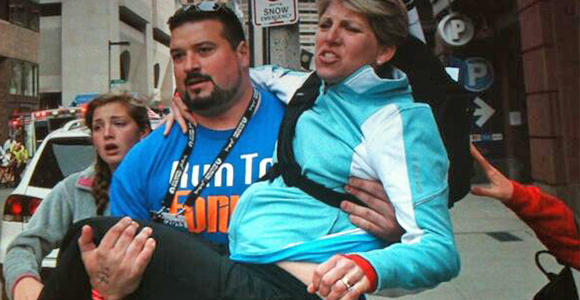
Section Branding
Header Content
How Students Can Help the Boston Bombing Victims
Primary Content

My heart goes out to all of the victims of the Boston Marathon bombing and their families and friends. Like many people who don’t live in Boston, I feel helpless but want to do something to assist. Your students probably feel the same way. But they may not know where to begin. I suggest that you encourage them in their desire to act and offer these recommendations on how they can help the Boston Bombing victims. (These suggestions can be used by anyone.)
1.) Contribute to the newly announced The One Fund Boston, this Indigogo fundraiser or start one: Massachussetts Governor Deval Patrick and Boston Mayor Tom Menino have started The One Boston Fund to help the most vulnerable. Students can contribute to that or they can contribute to Indigogo. Indigogo is a crowdfunding site where people can raise money online to support different causes. One person has already set up an Indigogo fundraiser to help the victims. As a class, your students can contribute to this fundraiser or create one of their own. They may be more keen on doing the latter as they can make their fundraiser more personal.
2.) Contribute to the Red Cross Disaster Fund: The Red Cross is the most reliable disaster relief fundraiser. Students can donate to the organization as a class or individually.
3.) Adopt a victim or victim’s family: Money isn’t the only support that bomb victims need. Words of encouragement and best wishes are especially welcome at this time. Students can find the name of a victim or a victim’s family through news or social media sites like Twitter and Facebook. As a class, they can send messages of encouragement to that victim and their family, mail a card or chip in to send flowers. They can also follow that victim’s progress through recovery and encourage that person during that time.
4.) Create a blog or social media site documenting the developments for others: As you know it’s very easy to create blogs or social media sites to aggregate news stories. Students can use these tools to keep track of developments and foster discussion with others - particularly people in the Boston area. That is the beauty of social media. It generates conversations for specific audiences. Students can note that their site is a forum for those affected by the Boston bombing or anyone else who would like to help the bombing victims.
You can create the site using these free and easy tools:
- Wordpress.com - a free blog/website creation tool
- Kidblog.org - a free blog/website creation tool for educators
- Weebly.com - a free group blog for educators
- Storify.com - a free social media website aggregator
Discuss the Disaster in Class
In addition to coming up with a plan to help the victims, it’s important that you encourage students to simply talk about the bombing. I know I have been disturbed and deeply saddened by the news of the death of eight year old Martin Richard. He was killed as he greeted his dad who was making his way to the finish line. Imagine how this news may be affecting your students, especially the ones who are around Martin’s age?
Heather Neal has written this post on how to talk to young children about scary situations. PBS Newshour Extra has this lesson plan on how the body reacts during and after tragedy that can be the cornerstone of a conversation. There are also discussion points on the CNN Student News site.
How else can students and everyone concerned support the Boston bombing victims? Post your comments here.
My heart goes out to a





